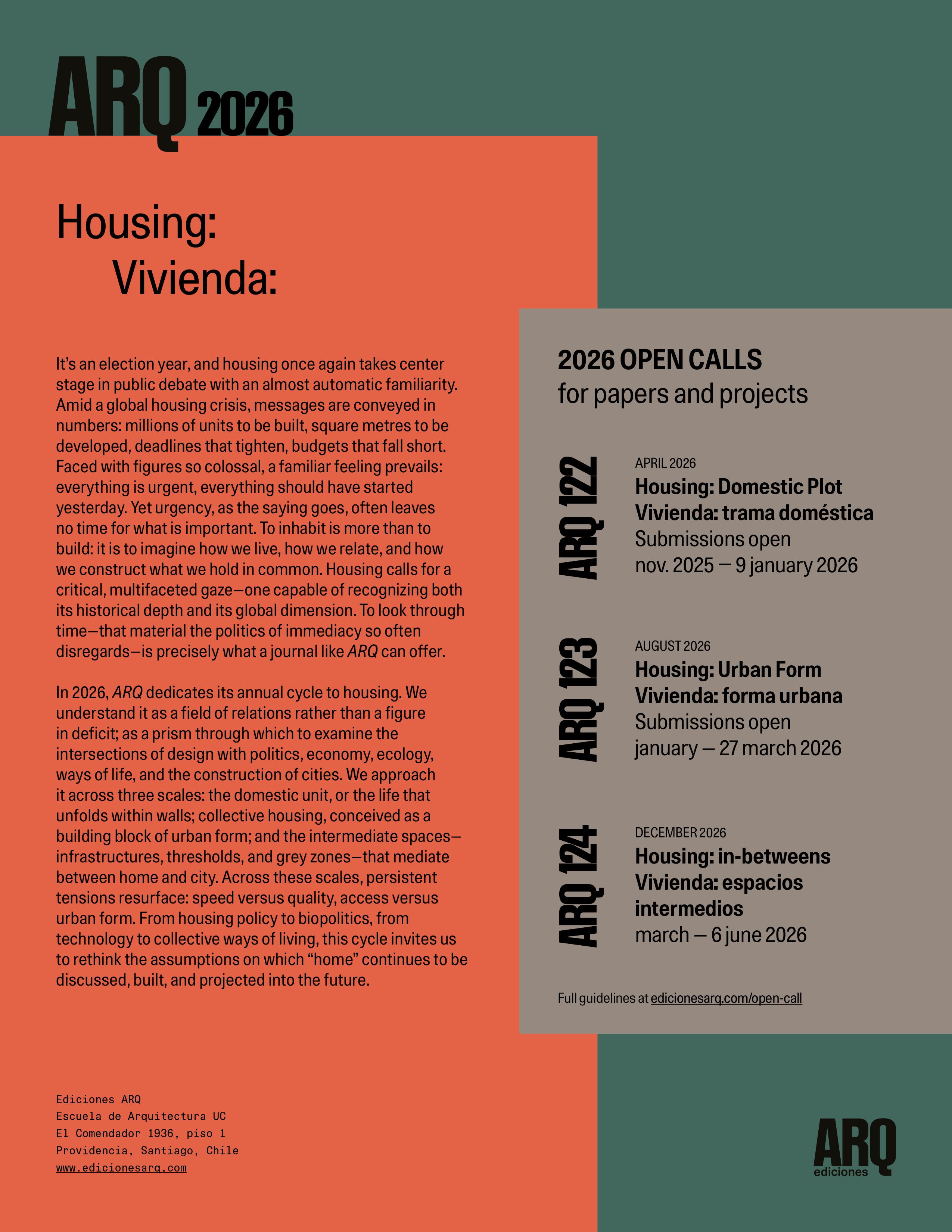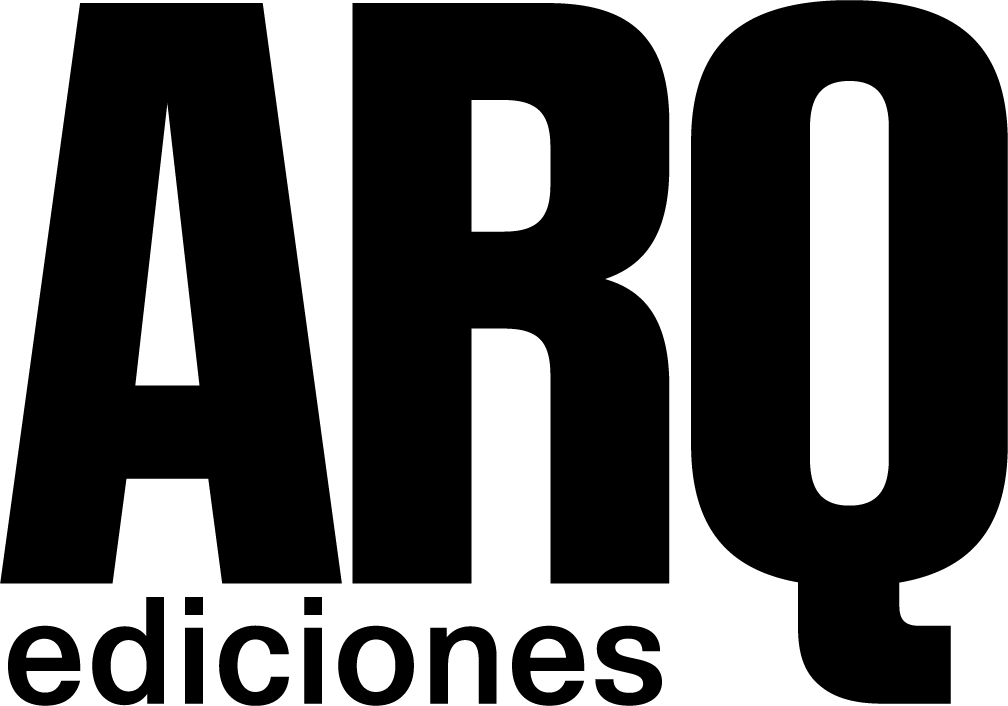News / Coming Soon —

Call for Submissions open until January 9, 2026
We’re announcing the full calendar for ARQ’s 2026 editorial cycle, Housing:, and the first open call of the year. ARQ 122 focuses on the domestic plot and invites contributions that examine how architecture and landscape redefine the limits of the home today—its spaces, technologies, routines, and forms of care—amid a global housing crisis and shifting models of family, property, and dwelling. We welcome academic essays (6,000 words), critiques (1,500 words), and works and projects. Submissions are open until 9 January 2026. More details in our Open call section.
ARQ 122 Housing: Domestic Plot
We’re announcing the full calendar for ARQ’s 2026 editorial cycle, Housing:, and the first open call of the year. ARQ 122 focuses on the domestic plot and invites contributions that examine how architecture and landscape redefine the limits of the home today—its spaces, technologies, routines, and forms of care—amid a global housing crisis and shifting models of family, property, and dwelling. We welcome academic essays (6,000 words), critiques (1,500 words), and works and projects. Submissions are open until 9 January 2026. More details in our Open call section.
